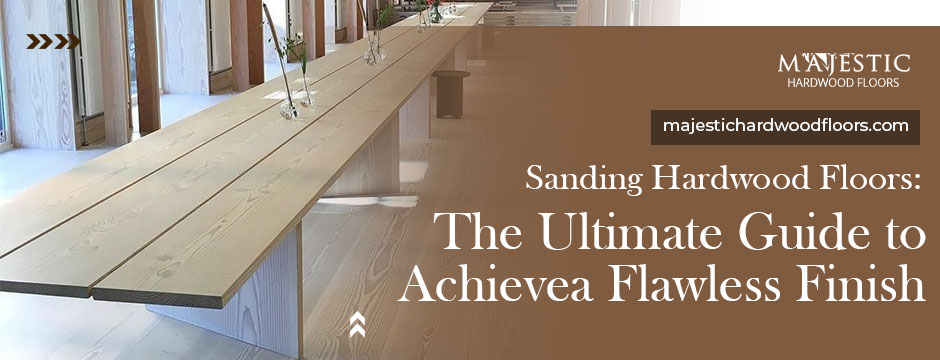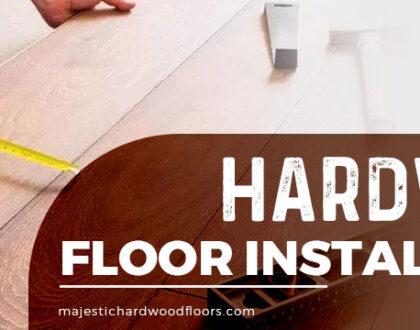Sanding Hardwood Floors: The Ultimate Guide to Achieve a Flawless Finish

Refinishing hardwood floors is a transformative and rewarding DIY project that can breathe new life into your home’s interior. However, to achieve a flawless finish, the process of sanding the hardwood floors plays a crucial role. Sanding is not only about removing old finishes and scratches but also about preparing the surface for a smooth and even application of stains and sealers. In this comprehensive guide, we will take you through the step-by-step process of sanding hardwood floors like a pro. From preparation to techniques and essential tips, we’ll cover everything you need to know to ensure your hardwood floors look stunningly beautiful and stand the test of time.
Step 1: Evaluate Your Floors
Before beginning the process of sanding hardwood floors, carefully evaluate the condition of your hardwood floors. Look for deep scratches, gouges, and uneven surfaces. Assess the overall thickness of the wood, as excessive sanding can damage the floors. Minor surface imperfections can usually be addressed during refinishing, but significant damage may require professional assistance or replacement of damaged boards.

Step 2: Gather the Right Tools and Equipment
To sand your hardwood floors effectively, you’ll need the following tools and equipment:
- Drum sander or orbital sander
- Edger sander for corners and edges
- Different grits of sandpaper (coarse, medium, and fine)
- Safety gear (dust mask, safety goggles, and ear protection)
- Vacuum cleaner
- Tack cloth or microfiber cloth
- Wood filler (if needed)
- Floor buffer (optional)
- Sanding screens (for floor buffer, if used)
Step 3: Prepare the Area
Before starting the sanding process, remove all furniture and rugs from the room. Cover doorways with plastic sheeting to prevent dust from spreading to other areas of your home. Seal off air vents and turn off the HVAC system to minimize dust circulation.
Step 4: Start Sanding with Coarse Grit
Begin the hardwood floor sanding process with coarse grit sandpaper, which will effectively remove old finishes, stains, and scratches. Use a drum sander or orbital sander, moving in the direction of the wood grain. Avoid sanding against the grain, as it can cause unevenness and visible scratches.
Step 5: Sand the Edges
For corners and edges that the drum sander cannot reach, use an edger sander with the same coarse grit sandpaper. Be cautious not to sand too aggressively, as this can create uneven results.
Step 6: Fill Gaps and Imperfections
After sanding, inspect the floor for gaps, cracks, or nail holes. Use wood filler to fill these imperfections, ensuring a seamless and uniform surface. Allow the filler to dry completely before proceeding to the next step.
Step 7: Sand with Medium and Fine Grits
Switch to medium grit sandpaper and sand the entire floor again, followed by fine grit sandpaper. This step further smoothens the surface and prepares it for staining or sealing. Sanding with finer grits will help eliminate scratches left by the coarser grits.

Step 8: Clean Thoroughly
Remove all sanding dust and debris from the floor and surrounding area using a vacuum cleaner and tack cloth or microfiber cloth. A clean surface is essential for achieving a flawless finish.
Step 9: Optional: Buff the Floor
If you desire an ultra-smooth finish, consider using a floor buffer with sanding screens. Buffing the floor will help eliminate fine scratches and prepare the surface for staining or sealing.
Step 10: Final Inspection
Before proceeding to staining or sealing, inspect the floor for any missed spots or imperfections. Make any necessary touch-ups with sandpaper or wood filler.
To Sum It All Up
Sanding hardwood floors is a labor-intensive process that requires precision and attention to detail. By following the steps outlined in this ultimate guide, you can achieve a flawless finish that will enhance the beauty and longevity of your hardwood floors. Remember to choose the appropriate grits of sandpaper, fill gaps and imperfections, and clean thoroughly to ensure a smooth and even surface. Whether you are refinishing your hardwood floors to restore their original beauty or to give them a fresh look, sanding is the key to a successful and professional-quality finish, from the best hardwood floor refinishers. Now that you have the ultimate guide at your disposal, embark on your sanding journey with confidence and achieve stunning results that will leave your floors looking brand new and ready to impress for years to come. Want to find out more? Visit us at Majestic Hardwood Floors!


